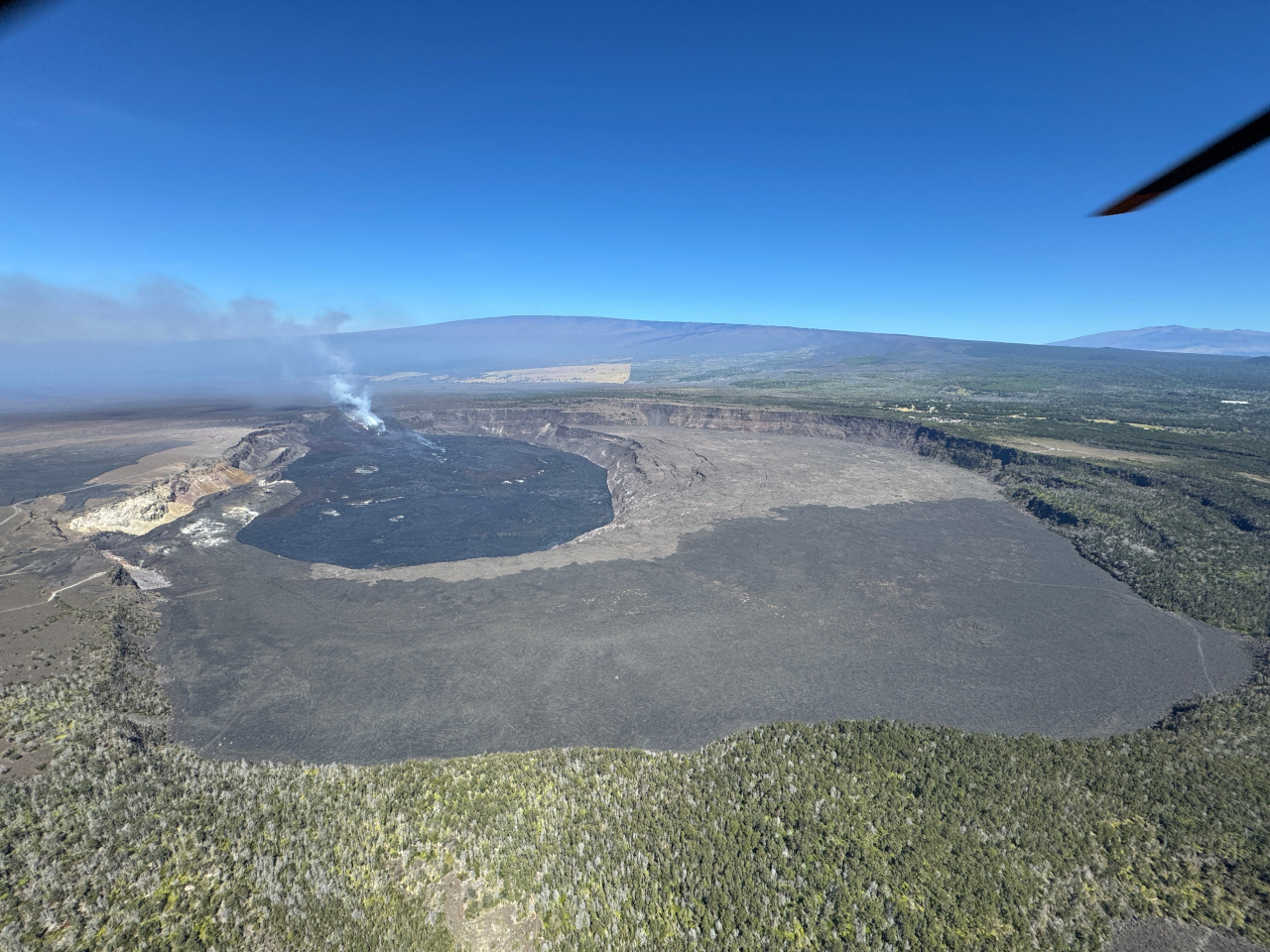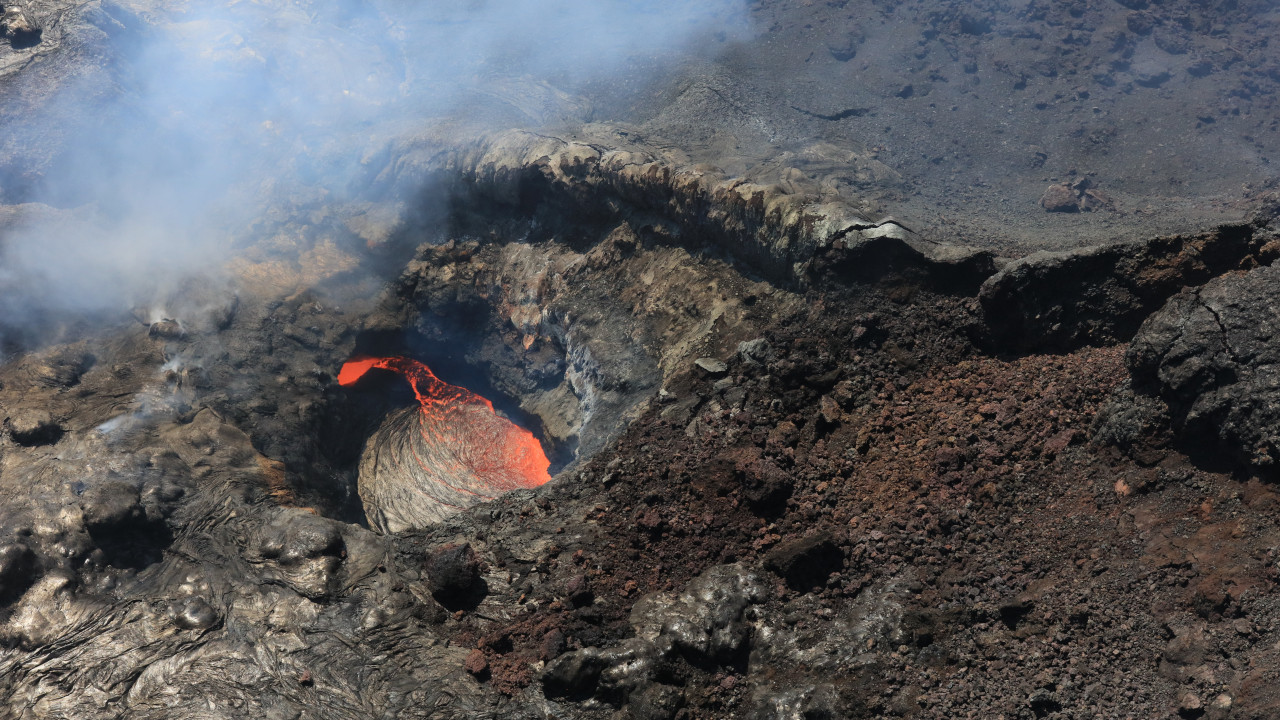(BIVN) – Precursory activity associated with Episode 30 in the ongoing Kīlauea summit eruption continues, although vigorous lava fountaining has yet to occur.
Scientists with the USGS Hawaiian Volcano Observatory spotted lava in the north vent during a Tuesday morning helicopter overflight. The lava was 15 to 30 feet (5–10 meters) below the top of the vent.
“The lava is degassed and is feeding a low volume into a lava tube inside of older flows in the crater,” Observatory scientists wrote. “There has been no movement or incandescent breakouts from lava flows on the floor of Halemaʻumaʻu related to current vent activity or other sources.”

USGS: “This wide-angle view of Kaluapele (Kīlauea caldera) was captured during the Hawaiian Volcano Observatory’s helicopter overflight on August 5, showing the eastern caldera floor (near) along with more recent lava flows (far, darker circular zone) covering the floor of Halema‘uma‘u crater. Mauna Loa (left background) and Mauna Kea (right background) are visible in the distance.” (USGS photo by M. Patrick)
Although the precursory activity began on the morning of August 4th, summit tiltmeters have recorded virtually no net inflation since August 1st. Still, models suggest sustained lava fountaining “may start between now and Thursday if the slow inflation recorded over the past 2–3 days continues,” the USGS HVO said.
From Tuesday’s summit observations:
Lava overflowed from the north vent at 5:51 a.m. HST and drained back with little spattering in the vent by 5:59 a.m. HST on Monday, August 4. The event was a typical gas-pistoning cycle that produced short overflows. This had been preceded by an earlier gas-pistoning event with lava appearing at 5:14 a.m. HST and draining back with no lava flows and little spattering at 5:18 a.m. HST. Strong glow was visible from the north vent early this morning, with rare spatter visible in V1cam. Incandescence in other parts of the crater remains very low, with weak, intermittent glow from two areas higher up on the eruptive cone. A helicopter overflight of the north vent this morning confirmed that lava is within 15–30 feet (5–10 meters) of the top of the vent. The lava is degassed and is feeding a low volume into a lava tube inside of older flows in the crater. There has been no movement or incandescent breakouts from lava flows on the floor of Halemaʻumaʻu related to current vent activity or other sources.
Elevated degassing continues from the vent. Average sulfur dioxide (SO2) emission rates during inter-episode pauses are typically 1,200 to 1,500 t/d, though emission rates vary on short time scales in association with gas pistoning.
Background seismic tremor remains low during the eruption pause.
Summit tiltmeter records have fluctuated over the past several days. UWD recorded less than 1 microradian of slow inflation over the last 24 hours. Fountaining associated with episode 29 resulted in approximately 19 microradians of deflation. The UWD tiltmeter had re-inflated about 18 microradians at the time of this update but with little net gain since Friday evening, August 1.
The USGS Volcano Alert Level for Kīlauea remains at WATCH. All activity during this ongoing eruption has been confined to Halemaʻumaʻu crater within Hawaiʻi Volcanoes National Park.


by Big Island Video News10:27 pm
on at
STORY SUMMARY
HAWAIʻI VOLCANOES NATIONAL PARK - A helicopter overflight of the north vent Tuesday morning confirmed that lava is within 15 to 30 feet of the top of the vent.